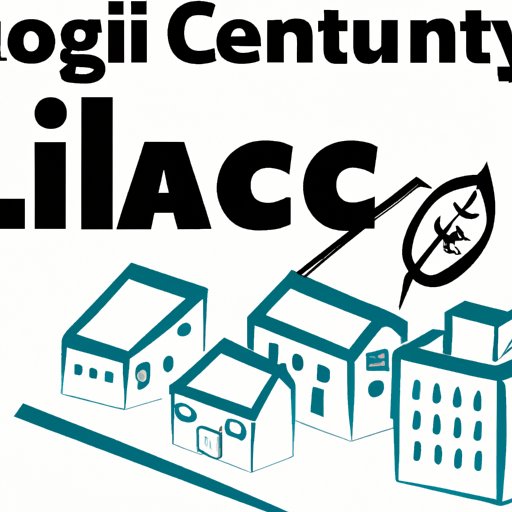Introduction
Local government finance is a complex topic that involves the management of funds for both current operations and long-term investments. In order to effectively manage finances, local governments must consider a variety of factors, including the costs of providing services and programs, the role of debt in financing public projects, and the availability of state and federal aid. This article will explore the challenges faced by local governments in managing their finances, analyzing the impact of these challenges, examining the causes, exploring solutions, and investigating the potential impact of unfunded mandates on local budgets.

Analyzing the Impact of Local Government Financing Challenges
Local governments face numerous financial challenges, ranging from rising costs of providing services and programs to limited tax revenues. These challenges can have a significant impact on the ability of local governments to meet the needs of their citizens. According to a study conducted by the National League of Cities, “In fiscal year 2017, local governments spent $1.6 trillion, or nearly 12 percent of GDP, on services such as education, health care, police protection, roads and other infrastructure.”
Examining the Costs of Providing Services and Programs
The cost of providing services and programs is one of the most significant challenges faced by local governments. These costs are often unpredictable and can vary significantly from year to year. For example, the costs of providing health care services have risen dramatically in recent years, due to an aging population and increasing medical costs. In addition, local governments must also consider the costs associated with providing public safety services, such as fire protection and police services.
Exploring the Role of Debt in Financing Public Projects
Another challenge faced by local governments is the need to finance large public projects, such as schools and highways. In many cases, local governments turn to debt financing in order to fund these projects. While this can be an effective way to finance large-scale projects, it can also lead to an increased burden on taxpayers if the debt is not managed properly. According to the US Government Accountability Office, “State and local governments have issued more than $3.2 trillion in debt since 2000, and the amount of outstanding debt has grown faster than the economy over the last decade.”
Examining the Causes of Financial Struggles for Local Governments
In order to understand the challenges faced by local governments, it is important to examine the causes of their financial struggles. Two of the primary causes are unfunded mandates and limited tax revenues.
Investigating Unfunded Mandates
Unfunded mandates are regulations imposed by higher levels of government on local governments without providing additional funding to cover the costs of compliance. These mandates can place a significant financial burden on local governments, as they are often required to implement new policies without adequate financial resources. According to a report issued by the National Conference of State Legislatures, “Unfunded mandates are estimated to cost states more than $140 billion annually.”
Assessing Limited Tax Revenues
Limited tax revenues are another major challenge faced by local governments. Many local governments rely heavily on property taxes to fund their operations, but these revenues can be unpredictable and can fluctuate significantly from year to year. In addition, local governments are often limited in the types of taxes they can impose, which can further limit their ability to raise revenue.

Exploring Solutions to Local Government Finance Challenges
There are several potential solutions to the challenges faced by local governments in managing their finances. These solutions include evaluating available state and federal aid, exploring alternatives to taxation, and investigating the impact of unfunded mandates on local budgets.

Evaluating Available State and Federal Aid
State and federal aid can provide a valuable source of funding for local governments. These grants can help offset the costs of providing essential services and can also be used to finance large-scale public projects. However, it is important for local governments to understand the terms and conditions of any grants they receive, as some grants may come with strings attached.
Exploring Alternatives to Taxation
In addition to relying on state and federal aid, local governments can also explore alternative sources of revenue, such as user fees, public-private partnerships, and lotteries. These options can help local governments diversify their revenue streams and reduce their reliance on taxes.

Investigating the Impact of Unfunded Mandates on Local Governments
Unfunded mandates can have a significant impact on local governments, as they can place an additional burden on already strained budgets. It is important for local governments to understand the costs associated with complying with these mandates and to work with higher levels of government to seek relief from these costly requirements.
Assessing the Effect of Limited Tax Revenues on Local Government Finances
Local governments must also assess the effect of limited tax revenues on their finances. One way to increase tax revenues is to broaden the tax base by introducing new taxes or raising existing taxes. However, this can be politically unpopular and should be done with caution. Local governments should also explore options for increasing efficiency and reducing costs in order to maximize the use of available tax dollars.
Understanding the Role of State and Federal Aid in Local Government Finance
State and federal aid can play an important role in helping local governments manage their finances. These grants can provide a much-needed source of funding for public projects and can help offset the costs of providing essential services. However, local governments should be aware of the potential downsides of relying too heavily on state and federal aid, such as the loss of autonomy and the potential for reduced accountability.
Conclusion
Local governments face numerous challenges when it comes to managing their finances. These challenges can have a significant impact on the ability of local governments to provide essential services and programs to their citizens. By understanding the causes of these challenges, exploring solutions, and evaluating the potential impact of state and federal aid, local governments can better manage their finances and ensure the long-term financial health of their communities.
(Note: Is this article not meeting your expectations? Do you have knowledge or insights to share? Unlock new opportunities and expand your reach by joining our authors team. Click Registration to join us and share your expertise with our readers.)
